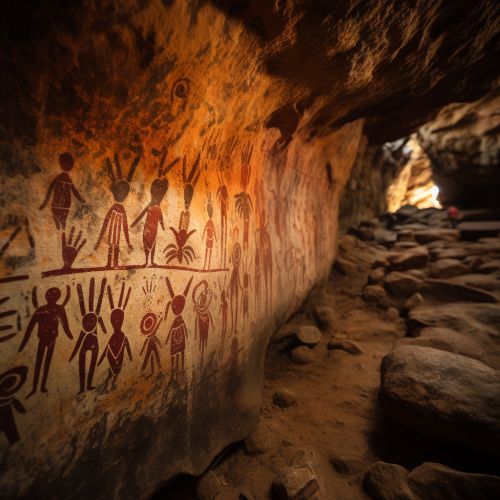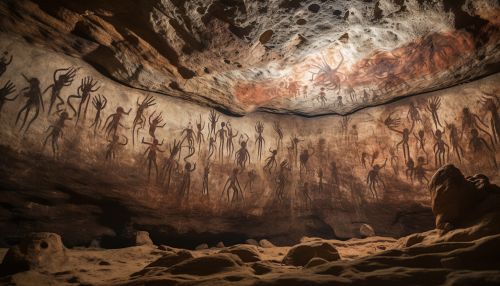Prehistoric Art and Cultural Expression
Prehistoric Art: An Overview
Prehistoric art refers to the visual arts produced in preliterate, prehistorical cultures beginning somewhere in very late geological history, and generally continuing until that culture either develops writing or other methods of record-keeping, or makes significant contact with another culture that has, and that makes some record of major historical events. Prehistoric art is often considered as the earliest form of cultural expression.
Paleolithic Art
The Paleolithic era is characterized by the emergence of basic stone tools and the advent of modern artistic sensibilities. Art from this period includes simple drawings, sculptures, and engravings. The most common themes in Paleolithic art are large wild animals, such as bison, horses, aurochs, and deer, and tracings of human hands as well as abstract patterns, called finger flutings.


Mesolithic Art
The Mesolithic period, also known as the Middle Stone Age, saw the development of finer, smaller stone tools such as arrow or spear points. The art of this period was characterized by a shift towards more abstract and symbolic forms. The first signs of human settlement, such as huts and villages, also appear during the Mesolithic period.
Neolithic Art
The Neolithic period, or the New Stone Age, is marked by the advent of agriculture, which had a profound impact on art. The development of pottery, for example, allowed for the creation of more complex and detailed sculptures. Neolithic art also includes megalithic architecture, such as the famous Stonehenge in England.
Bronze Age Art
The Bronze Age saw the development of the first complex societies and states. This was reflected in the art of the period, which became more complex and sophisticated. Bronze Age art includes elaborate pottery, metalwork, and textiles, as well as monumental architecture and complex burial practices.
Iron Age Art
The Iron Age is characterized by the widespread use of iron and steel. The art of this period reflects the increasing complexity of society, with the development of written language and the growth of cities. Iron Age art includes intricate metalwork, elaborate jewelry, and complex sculptures.
Conclusion
Prehistoric art provides a fascinating insight into the development of human society and culture. From the simple drawings of the Paleolithic era to the complex sculptures of the Iron Age, the art of prehistory tells the story of human progress and evolution.
